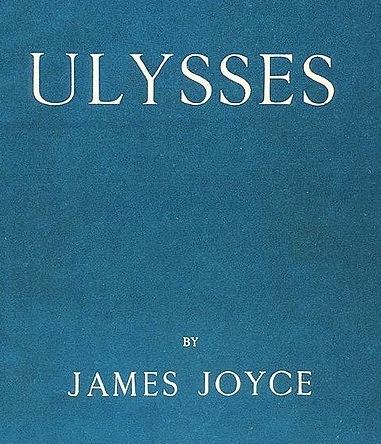James Joyce’s ‘Ulysses’ Is on Trial Once More — in a New Play About the 20th Century’s Greatest Novel
Judge Woolsey’s ruling that the literary landmark could be admitted to America marks a watershed in the history of free expression.

“The United States vs. Ulysses” centers on the case, tried at the Southern District of New York in 1933, of United States v. One Book Called Ulysses, which is a landmark of America’s law on free expression. At issue in the trial was whether James Joyce’s novel, “Ulysses,” from 1922, was obscene. The presiding judge, James Monroe Woolsey, determined that it was not. A precedent was set that great literature could be coarse — and sexy.
The play, written by Colin Murphy, directed by Conall Morrison, and on until the end of this month at the Irish Arts Center on Manhattan’s far west side, is actually, like Hamlet’s “The Mousetrap,” a play within a play. It’s set at CBS studios on December 8, 1933. A troupe of radio actors on a program called “The March of Time” — which ran between 1931 and 1945 — dramatize the trial. The Great Depression still bites, Prohibition is ending, and the New Deal is in its infancy.
By the time of Judge Woolsey’s trial the book had already taken a Homeric path toward publication. Joyce began writing it in 1914, and it was partially serialized in an avant-garde magazine, the Little Review, between 1918 and 1920. Full publication came at Paris in 1922 through the offices of Sylvia Beach. Meanwhile, “Ulysses” remained contraband in America, interdicted because of frank descriptions of sex, blasphemy, and seedy subversion.
Judge Woolsey, though, did not detect in “Ulysses” the “leer of the sensualist,” even in the book’s closing soliloquy by Molly Bloom. That could be the most famous such speech in literature, after only Shakespeare’s orations. The judge reckoned that while in “many places the effect of “Ulysses” on the reader undoubtedly is somewhat emetic, nowhere does it tend to be an aphrodisiac.” That meant that it was neither pornographic nor obscene.

The verdict was a close one, though, and was upheld by a two to one margin by the Second United States Appeals Circuit. The victory was, appropriately enough — the protagonist of “Ulysses” is an Irish Jew, Leopold Bloom — secured by two Jewish Americans. The first is the founder of Random House, Bennett Cerf, who became the first to publish the book in America. His lawyer was Morris Ernst, a titan of civil liberties law.
“The United States vs. Ulysses,” which bills itself as a “bawdy courtroom drama,” surfaces the human aspect of this trial that turns on a book. For most of the play, “Ulysses” sits on a lectern at the center of the stage, the famous blue of its first edition cover gleaming like an icon. Joyce’s stream of consciousness technique is mirrored by passages in the play where episodes from the book interrupt the proceedings with Joyce’s energy.
The play’s cast of six all do double duty, toggling between Judge Woolsey’s courtroom and Joyce’s pages. The backward glance of nearly a century means that contemporary viewers might have little sympathy for the government, but the Department of Justice took the nuanced stance that the book was a “literary masterpiece” — albeit one marbled with obscenity. Judge Woolsey’s opinion admits that “Ulysses” is “not an easy book to read or to understand.”
Judge Woolsey’s opinion reckons that “Joyce has attempted … with astonishing success to show how the screen of consciousness with its ever-shifting kaleidoscopic impressions carries, as it were on a plastic palimpsest, not only what is in the focus of each man’s observation of the actual things about him, but also in a penumbral zone residua of past impressions.” Woolsey decided that for Joyce to shy away from off-color subjects would be “artistically inexcusable.”
“Ulysses” is a book so full of voices — a crowded pub at Dublin comes to mind — that the radio and the stage both seem true to its spirit. In 1982, to commemorate “Bloomsday”— the book is set on June 16, 1904 — the Irish broadcaster RTÉ staged a radio dramatization that ran for some 30 hours. This play, at 85 minutes, is just a fraction of that. Earnest and winning, ”The United States vs. Ulysses” sent me back to the book. “Yes I said yes” I will read it.

